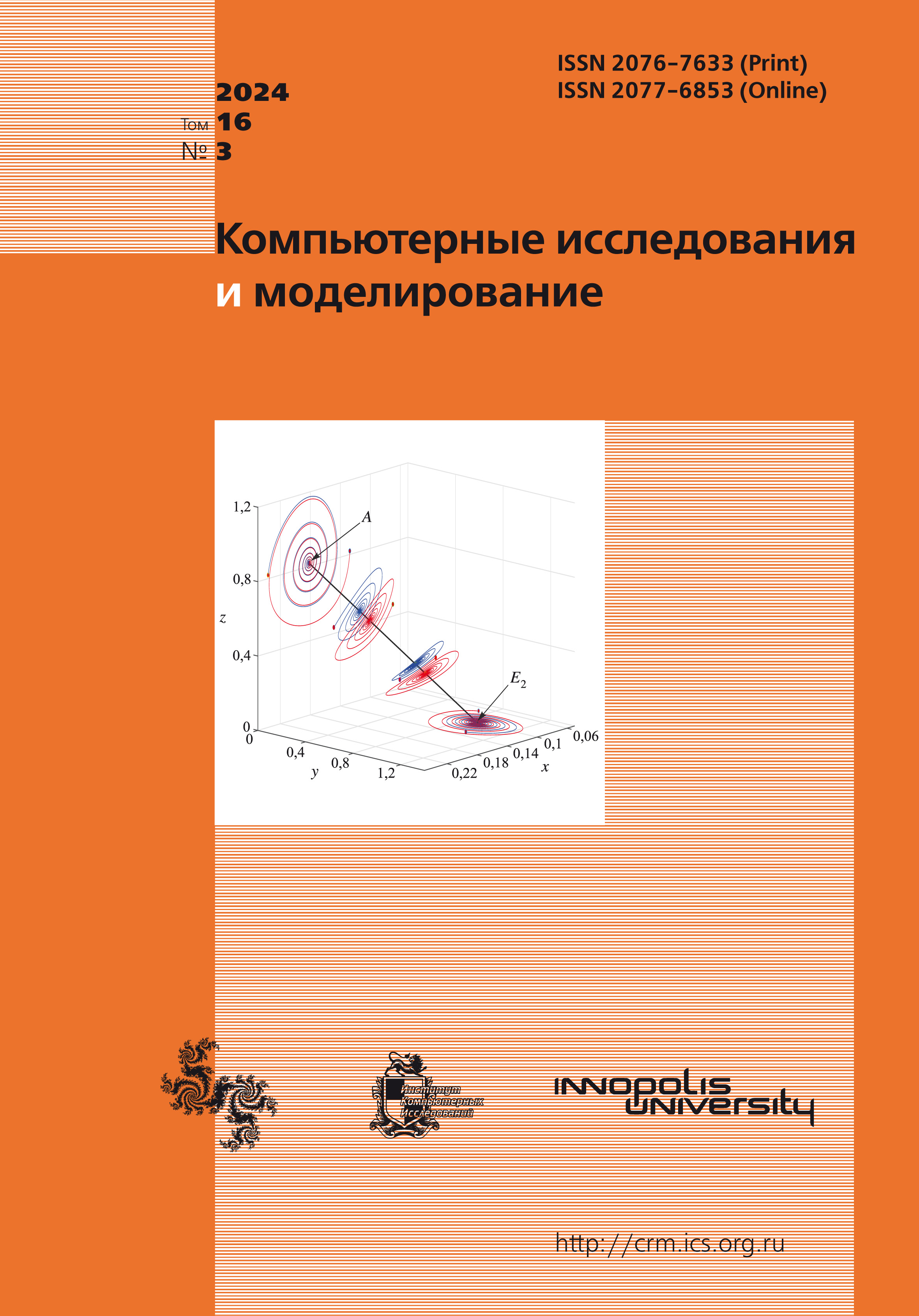All issues
- 2024 Vol. 16
- 2023 Vol. 15
- 2022 Vol. 14
- 2021 Vol. 13
- 2020 Vol. 12
- 2019 Vol. 11
- 2018 Vol. 10
- 2017 Vol. 9
- 2016 Vol. 8
- 2015 Vol. 7
- 2014 Vol. 6
- 2013 Vol. 5
- 2012 Vol. 4
- 2011 Vol. 3
- 2010 Vol. 2
- 2009 Vol. 1
-
A study of nonlinear processes at the interface between gas flow and the metal wall of a microchannel
Computer Research and Modeling, 2022, v. 14, no. 4, pp. 781-794The work is devoted to the study of the influence of nonlinear processes in the boundary layer on the general nature of gas flows in microchannels of technical systems. Such a study is actually concerned with nanotechnology problems. One of the important problems in this area is the analysis of gas flows in microchannels in the case of transient and supersonic flows. The results of this analysis are important for the gas-dynamic spraying techique and for the synthesis of new nanomaterials. Due to the complexity of the implementation of full-scale experiments on micro- and nanoscale, they are most often replaced by computer simulations. The efficiency of computer simulations is achieved by both the use of new multiscale models and the combination of mesh and particle methods. In this work, we use the molecular dynamics method. It is applied to study the establishment of a gas microflow in a metal channel. Nitrogen was chosen as the gaseous medium. The metal walls of the microchannels consisted of nickel atoms. In numerical experiments, the accommodation coefficients were calculated at the boundary between the gas flow and the metal wall. The study of the microsystem in the boundary layer made it possible to form a multicomponent macroscopic model of the boundary conditions. This model was integrated into the macroscopic description of the flow based on a system of quasi-gas-dynamic equations. On the basis of such a transformed gas-dynamic model, calculations of microflow in real microsystem were carried out. The results were compared with the classical calculation of the flow, which does not take into account nonlinear processes in the boundary layer. The comparison showed the need to use the developed model of boundary conditions and its integration with the classical gas-dynamic approach.
-
High-throughput identification of hydride phase-change kinetics models
Computer Research and Modeling, 2020, v. 12, no. 1, pp. 171-183Metal hydrides are an interesting class of chemical compounds that can reversibly bind a large amount of hydrogen and are, therefore, of interest for energy applications. Understanding the factors affecting the kinetics of hydride formation and decomposition is especially important. Features of the material, experimental setup and conditions affect the mathematical description of the processes, which can undergo significant changes during the processing of experimental data. The article proposes a general approach to numerical modeling of the formation and decomposition of metal hydrides and solving inverse problems of estimating material parameters from measurement data. The models are divided into two classes: diffusive ones, that take into account the gradient of hydrogen concentration in the metal lattice, and models with fast diffusion. The former are more complex and take the form of non-classical boundary value problems of parabolic type. A rather general approach to the grid solution of such problems is described. The second ones are solved relatively simply, but can change greatly when model assumptions change. Our experience in processing experimental data shows that a flexible software tool is needed; a tool that allows, on the one hand, building models from standard blocks, freely changing them if necessary, and, on the other hand, avoiding the implementation of routine algorithms. It also should be adapted for high-performance systems of different paradigms. These conditions are satisfied by the HIMICOS library presented in the paper, which has been tested on a large number of experimental data. It allows simulating the kinetics of formation and decomposition of metal hydrides, as well as related tasks, at three levels of abstraction. At the low level, the user defines the interface procedures, such as calculating the time layer based on the previous layer or the entire history, calculating the observed value and the independent variable from the task variables, comparing the curve with the reference. Special algorithms can be used for solving quite general parabolic-type boundary value problems with free boundaries and with various quasilinear (i.e., linear with respect to the derivative only) boundary conditions, as well as calculating the distance between the curves in different metric spaces and with different normalization. This is the middle level of abstraction. At the high level, it is enough to choose a ready tested model for a particular material and modify it in relation to the experimental conditions.
Indexed in Scopus
Full-text version of the journal is also available on the web site of the scientific electronic library eLIBRARY.RU
The journal is included in the Russian Science Citation Index
The journal is included in the RSCI
International Interdisciplinary Conference "Mathematics. Computing. Education"





